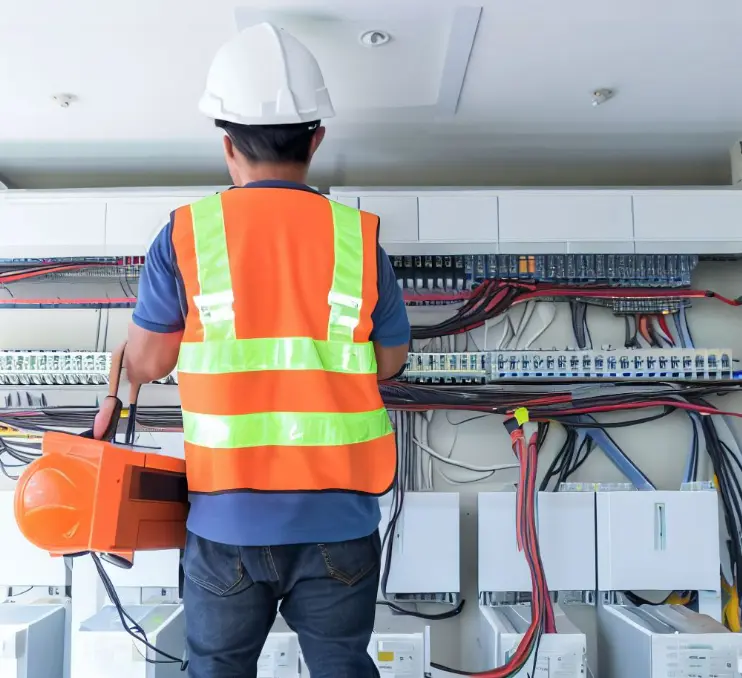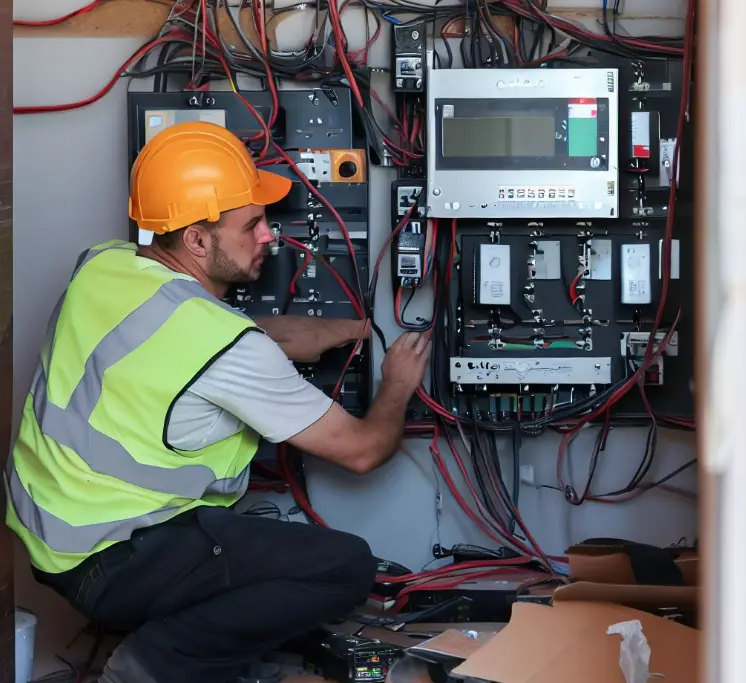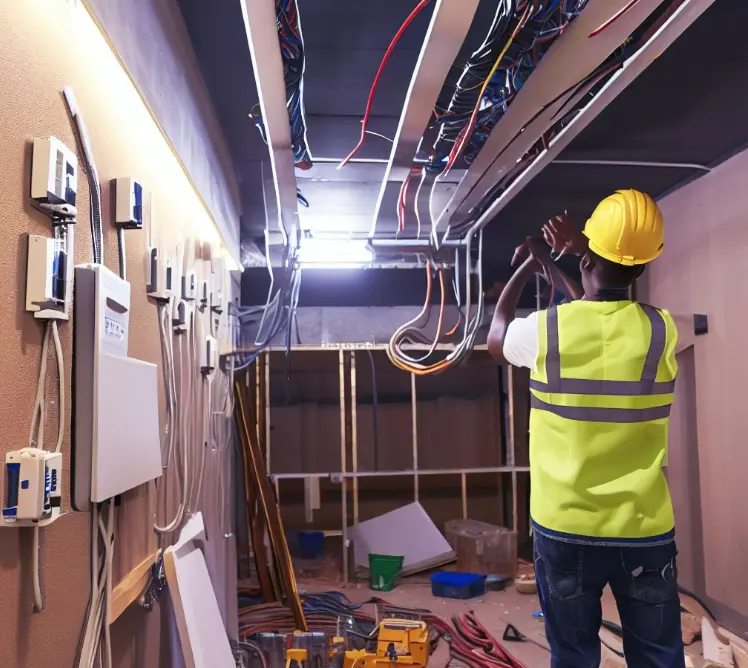Low voltage systems are an essential part of construction projects, from residential buildings to large commercial developments. But what exactly are low voltage systems, and why are they so important in construction?
What is Low Voltage?
Low voltage refers to electrical systems that operate at less than 50 volts. This is much lower than the 120/240-volt power that runs lights and appliances in a home or business.
 Low voltage systems primarily serve communication and control functions rather than power. Some of the most common low voltage systems used in construction include:
Low voltage systems primarily serve communication and control functions rather than power. Some of the most common low voltage systems used in construction include:
- Structured Cabling: The cables and components that transmit data, voice, video and other telecommunications, including Cat5 and Cat6 Ethernet cables, coaxial cables, routers, switches and more. Structured cabling powers networks, telephones, security systems and more.
- Audio/Visual Systems: The wiring and components for intercoms, background music, projectors, speakers and similar audio and video applications. These systems enable paging, video conferencing, presentations and entertainment.
- Building Automation Systems: The network of sensors, controllers and connections that monitor and control HVAC, lighting, shading, security, fire detection and other building systems. Building automation optimizes comfort and efficiency.
- Security and Alarm Systems: The sensors, keypads, wiring and related components for intrusion detection, access control and video surveillance systems. These systems protect building infrastructure and occupants.
- Lighting Control Systems: The wiring, relays, dimmers and controllers that enable advanced lighting scenes, schedules and automation. Lighting controls save energy and customize ambiance.
- Landscape/Outdoor Lighting: The underground wiring, transformers, fixtures and controls used for outdoor pathway, architectural and landscape lighting. Outdoor lighting provides visibility, ambiance and security.
Why Low Voltage Systems Matter in Construction
While low voltage systems don’t carry the electrical load that powers heavy equipment and machines, they serve absolutely vital functions in buildings.

Some key reasons low voltage systems are essential:
- Connectivity: Structured cabling enables network and telecom connectivity for devices, equipment, workers and occupants throughout a building. This underpins nearly all modern business and residential activities.
- Control and Automation: Building automation systems allow central control and optimization of HVAC, lighting and other systems. This provides efficiency, convenience and comfort.
- Safety and Security: Alarm and surveillance systems help protect assets, infrastructure and people. They provide visibility, deter threats, and enable rapid response to incidents.
- Energy Efficiency: Lighting controls reduce operating hours and energy waste from lighting. Building automation does the same for HVAC and other systems. This saves energy and money.
- Customization: A/V, lighting and other systems create controllable ambiance and environments tailored to any need. They enable multipurpose spaces and venues.
- Integration and Management: Building management systems centralize monitoring and control of multiple systems on a single platform. This enables holistic optimization and automation.
Low voltage systems integrate with and enable virtually every other system in a building. Construction projects require expertise in low voltage systems to ensure high performance, efficiency, safety, comfort and quality of the final product.
Planning Low Voltage Systems in Construction
Careful planning is required to successfully incorporate low voltage systems into a construction project.

- Determine Requirements: Identify the types of low voltage systems needed based on the building type, usage and client needs. Review plans to determine scale and scope.
- Consult Professionals: Engage low voltage designers, engineers and tradespeople early in planning to optimize system design and integration.
- Plan Infrastructure: Design conduits, cabling pathways, telecom rooms, rack space and other infrastructure to support low voltage systems. Coordinate with other trades.
- Include in Design: Incorporate low voltage into overall building information modeling and design to identify integration and clash points.
- Coordinate Sequencing: Schedule low voltage installation in coordination with other trades to streamline workflows and avoid rework.
Configure for Flexibility: Design low voltage infrastructure to accommodate future needs, capacity changes, and system upgrades or additions down the road. - Consider Sustainability: Specify energy efficient products and systems. Pursue rebates and incentives from utility efficiency programs.
Review Maintenance Needs: Ensure client understands equipment lifespan, warranty coverage, replacement schedules and maintenance requirements.
Low voltage systems integrate at multiple points with nearly all other building systems. Thorough planning and coordination is imperative to a successful installation.
Integrating Low Voltage Systems
One of the biggest challenges in low voltage systems is integration – ensuring all the technology works holistically within the building itself and with other systems. Key integration steps include:
- Defining protocols. Determine standard protocols for networks, building controls, AV systems, etc. to enable communication between components.
- Centralizing monitoring/control. Use building management systems to connect HVAC, lighting, security and other systems on a single dashboard.
- Managing cross-system interactions. Program sequences such as security cameras rolling when intrusion detected or lights raising when room occupied.
- Implementing common cabling standards. Follow consistent practices for cable specification, labeling, testing across all low voltage systems.
- Coordinating identifier schemes. Ensure codes for room numbers, cable labels, equipment tags are aligned across platforms.
- Considering cybersecurity. Apply protocols and access controls across systems to protect from external threats.
- Providing IT/OT coordination. Ensure IT professionals work with low voltage systems integrators for holistic connectivity.
- Performing testing and commissioning. Verify systems work individually and together before sign-off. Complete full functional tests.
Effective integration requires collaboration across multiple trades and disciplines throughout the construction process. When done well, the results are buildings with seamless efficiency, control and connectivity.
